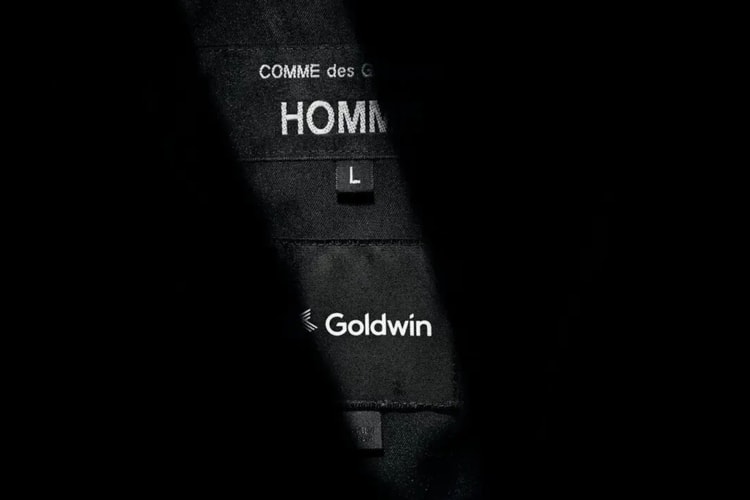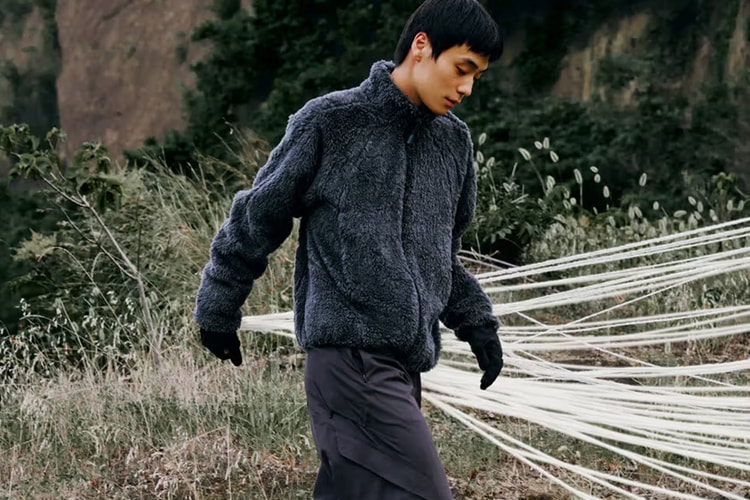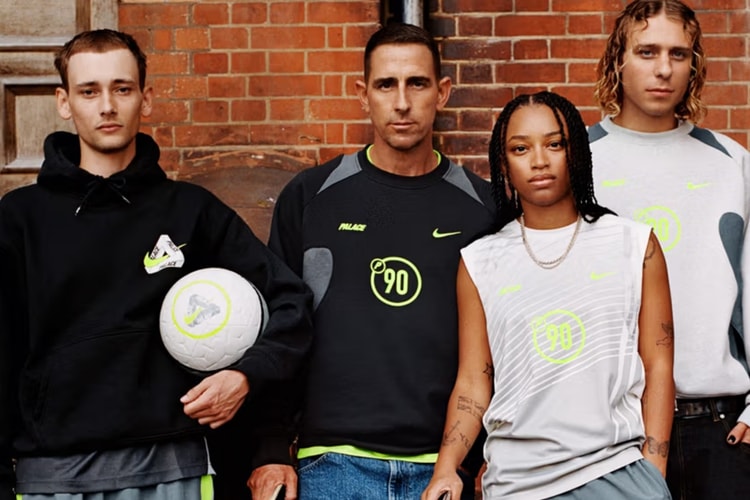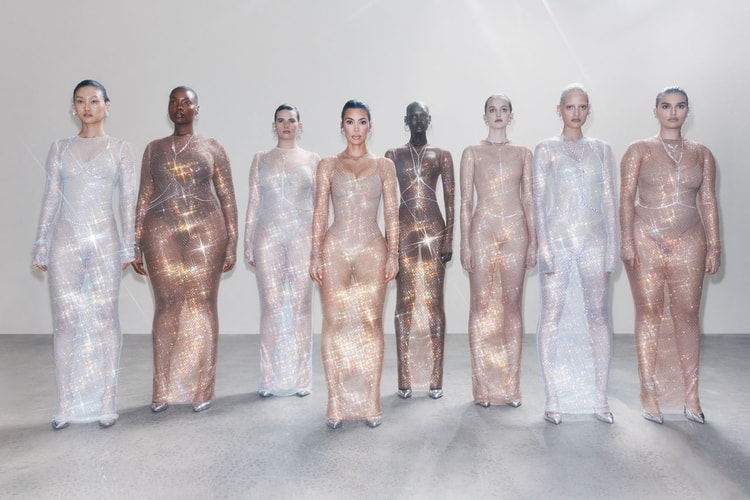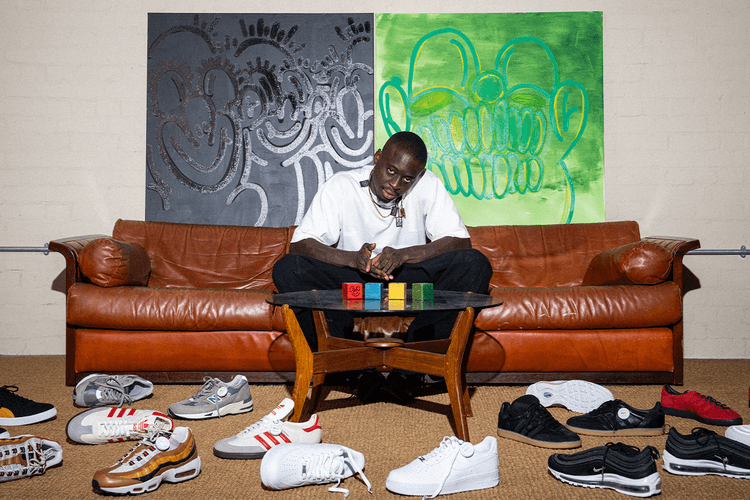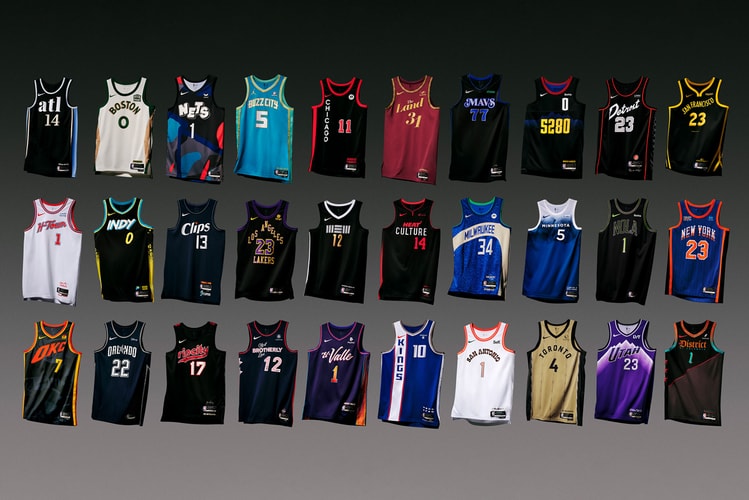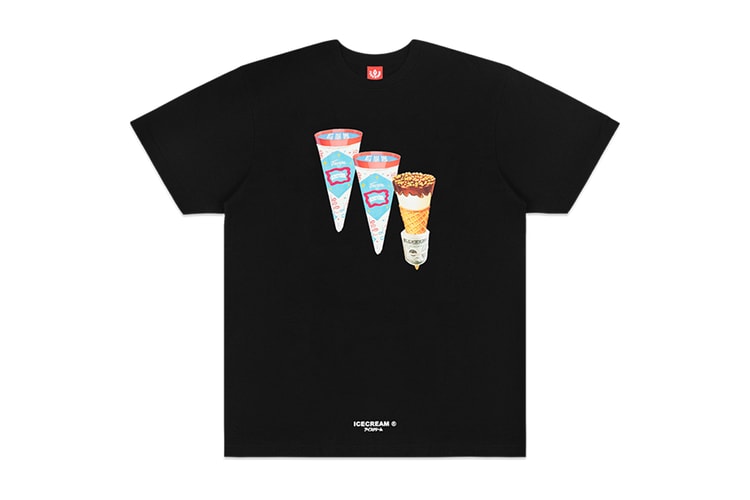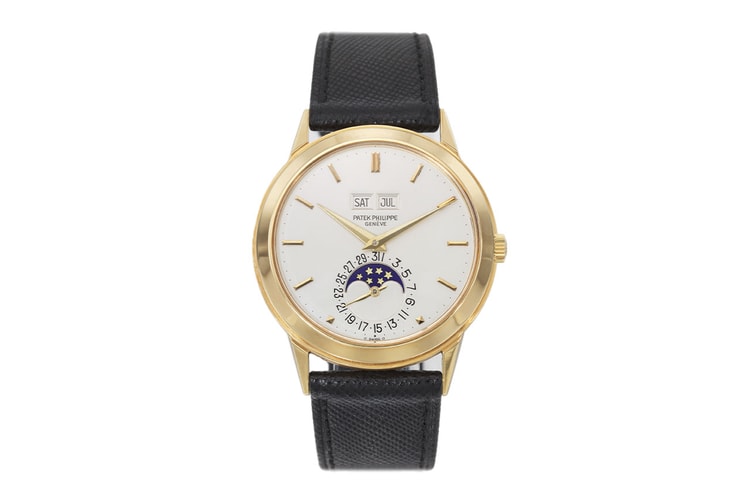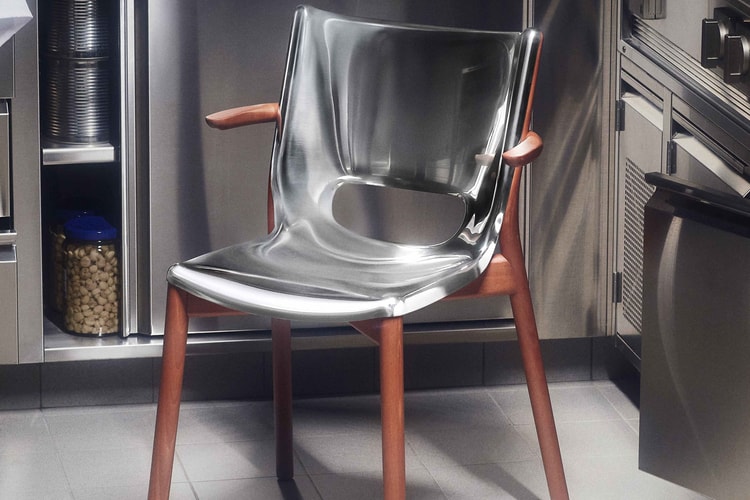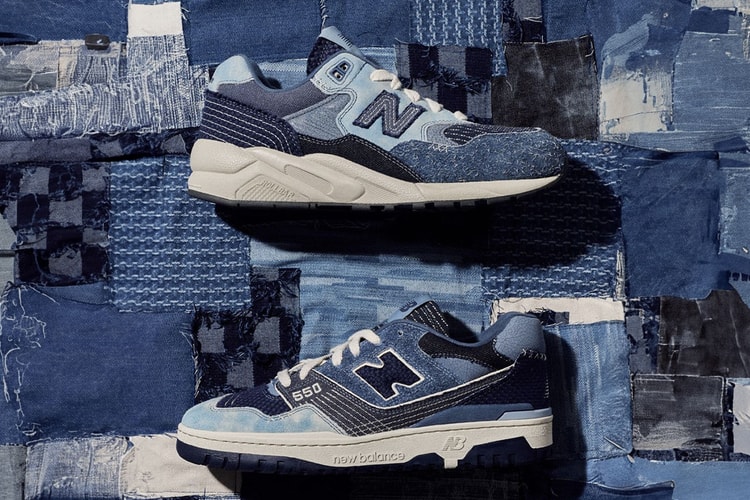Goldwin and SPIBER Want to Make Better Materials for a Better Planet
Hypebeast discussed how insect-inspired materials could revolutionize outerwear with Goldwin’s brand manager and one of SPIBER’s scientists.










Japan is both a place with deeply held traditions and one of the most technologically advanced countries in the world — a juxtaposition that makes the coming together of two Japanese brands, Goldwin and SPIBER, so perfect. Goldwin, one of the oldest outdoor brands in the world, has made highly-technical sporting apparel since 1958, honing its craft and tradition over the course of eight decades; SPIBER, on the other hand, is a biotechnology and materials science company founded in 2007 with an aim to research and create innovative, sustainable, protein-based fibers. Since 2015, the pair have worked together to create and develop new structural protein materials for use in various one-off apparel applications. A few weeks back, they debuted the first full collection to come from their collaboration.
Since the late 20th century, Japan has exported its modern cultural heritage to the world through its art, food and fashion – icons like Mario, Pikachu and the humble, dependable instant noodle. The collaboration between Goldwin and SPIBER, however, is seeking to export something else entirely; something sustainable, longer lasting, and for the greater good of our planet. It’s no secret the fashion industry is one of the world’s leading polluters and, whilst its become expected for a brand to weave sustainability into its business, one of the key questions at the heart of the issue still remains: what happens to the material once a garment has reached its end of life? The obvious answer would be to recycle, but, owing to the way in which garments are produced, it’s not so simple. Different materials have different compositions that affect how they can or can’t be reused, and different combinations of materials in any single garment – of which there are seemingly infinite possibilities – can complicate things further. Because of this, some garments can’t be regenerated and end up in landfill. This is the problem that Goldwin and SPIBER hope to solve.
Their solution is Brewed Protein, their name for the protein-based fibers SPIBER created that they hope could someday replace conventional animal-based, plant-based or synthetic materials. Whilst man-made, these fibers are inspired by nature, with SPIBER’s scientists researching the best properties of natural materials like the silks in spiders’ webs (hence the company’s name) or the rubber-like material found in the joints of grasshoppers that allows them to jump so high.
Hypebeast recently caught up with representatives from both brands at their recent pop-up in London. We spoke to Takuya Kinami, general manager of the Goldwin brand, and Kenji Higashil, a scientist and the executive vice president of SPIBER Europe about what this partnership means for the brands, consumers, and the industry. Read the full interview below.
What does this collaboration mean for Goldwin long-term?
Takuya Kinami: We certainly hope to see a future where it is possible to incorporate these fabrics into all of our products. As a brand, we need the customer to feel the value of our products [due to their price points], and that we’ve always done through the technical qualities of our garments and their functionality and attractive design. But now we’re thinking of bigger values. In addition to technicality and the design appeal, our products need to be something that are good for the future as well. That’s an additional level of value that we’re providing. We don’t intend for this to be a one-off collaboration, it’s the first step in our journey to co-create a future where revisiting the basics of our manufacturing go together with functionality and design.
When did you first discuss how SPIBER’s materials could be utilized by Goldwin?
Kenji Higashil: We actually started developing these materials in 2004. A couple of my classmates from graduate school decided to try and create lab-grown spider silk. The partnership with Goldwin started in 2015. At that time we were 10 years into the project and we were able to make fibers in the lab. We made fibers and yarns and wove them into fabrics, and we set out in 2015, to see if we could make garments for Goldwin. Initially, we were very optimistic that we would be able to have a product in a few months or maybe a year after starting the development, but it took us about four years of working back and forth and sending samples to Goldwin [to arrive at a finished product]. We actually had some people from Goldwin work as part of our team to help get the quality issues solved.. We still didn’t have the volume back then and we were only able to sell a very limited number of products. Since then we’ve been focusing on scaling up production and last year we finished making our first commercial plant in Thailand. We’re now able to make materials on a commercial scale.
Have the materials impacted the design process?
TK: Normally, when you’re making a product, you start with a design. You have a design in mind, the use case, and know what you want it to look like. And, based on that, you know the materials you want to be using, how flexible they need to be, how stretchy they need to be, how soft they need to be. So, you choose the material based on the design and the use case that you have for the garment. In this case, we know that we have these materials using SPIBER, and the question is then “how do we cook the materials that are our ingredients?” So you have the angle where, as you’ve heard, we’ve been constantly giving feedback on the on the materials that have been produced, and we’ve had that constant communication. We want to get that balance just right to create something that combines the design and the qualities of the fiber materials to create something that’s going to appeal to the customers.
What are some of the most interesting living organisms you’ve studied for inspiration to create new materials?
KH: We started out from spiders. There’s actually tens of thousands of different species of spiders, and each spider has evolved differently. So each spider has different properties, each type of spider silk is a little bit different. There’s a certain spider in Madagascar that has super tough fibers; that is one target that we’ve tried to replicate. It’s very difficult to make – we’re not yet able to make fibers that are as tough as it. There are some insects that have a rubber-like material that they use in their joints — that material is why dragonflies can flap their wings so fast and why grasshoppers can jump so high. These are some examples that have incredible functionality that humanity doesn’t yet have the ability to replicate. There’s a lot to learn from animals. One day we might be able to unlock that kind of thing.
A question for both of you: what roles do you see synthetic materials playing in the future of fashion, and how important will biomaterials become?
KH: I’d like to go first, but one important thing: it’s not that all synthetics will disappear. Synthetics make a lot of sense for certain applications. The problem is when you use synthetics in ways that prevent them from being regenerated. So I believe the future of synthetics will be one where there is an end-of-use solution designed into the product regeneration, and that it will be possible to use certain synthetics in combination with other materials in ways that you can process the end product.
TK: Fundamentally, I agree. From our point of view, as a brand that needs to commercialize these materials and these products, in the past we’ve used polyester, nylon, all of these materials as there was no alternative. There was no SPIBER in the past. But we can’t deny the fact that these materials that use fossil fuels have given us, humanity, a huge range of functionality and useful properties. So, assuming that we will still need these properties in our new materials, we need to be thinking about ways to design products that can be cyclical and regenerative. That’s why we’re working with SPIBER to come up with replacements.
As a premium brand with intricate design and production processes, some of Goldwin’s products are quite expensive. Will price continue to be prohibitive, or do you see a future where these innovations in fashion are accessible to all?
KH: The mission of our company is to find solutions that will help contribute to the sustainability and well being of mankind. In order to achieve that goal, it’s critical that we scale and that we have these materials used by everybody. It’s very important for us to find a way forward to bring the price of our materials down to where it becomes widespread. The key to achieving that is scale. Our first factory went online last year and we’ve so far made about 100 tonnes of material – maybe a little bit more than that. Even when this factory reaches full capacity, we’re only going to have made about 500 tonnes, and that’s nothing for the scale of a fiber. It’s a very, very small volume. But, as we scale that to thousands of tonnes, the price will go down significantly and it will be easier and easier for a wider range of brands to use our materials at scale.
TK: There are several things that go into making a cost-meets-value-effective product. There is the cost to produce, of course, but if we’re producing more fibers we can and should reduce the price. You mentioned that Goldwin is a premium brand. What makes it a premium brand isn’t just the fact that our products are expensive – it’s about the value of the product, the value that the consumer feels in that product. As well as the design, there’s the community element. Our customers feel this is a community they want to be part of. They share the brand’s view of the future, our outlook. All of that goes into making our brand what it is. And that’s what we aim to do. And so more people can get to know and love the brand, [if we can reduce price] through increasing volumes, that’s something that I would like to do.
Japan is incredibly traditional, but also very technologically innovative. How quintessentially Japanese is this partnership?
KH: Difficult question [laughs]. I would say it’s actually very, very Japanese in a very special way. This kind of partnership is not something that you find every day – or even every year – in Japan. I think it’s very unique in the world. And I think that was a very big leap for Goldwin to commit and invest so much over the course of eight years. I think the shared cultural background between Goldwin and SPIBER, both being Japanese companies, was a very critical, very important part of this partnership. It would have been very difficult for this particular partnership to happen if it weren’t for the fact that there was this shared background.
TK: We’re trying to do something that no one else has done. And we’re doing it not for immediate benefit. I think if we didn’t both have this unwavering determination to do something to change the future of society, this partnership wouldn’t have been possible. I can’t say whether this would or wouldn’t have been possible between a Japanese company and a British company, for example, but the fact that both SPIBER and Goldwin are Japanese companies with Japanese people made it easier to join hands, if you like, pulling our strengths together for a better future. I see a Japanese spirit in that – I think we have a tradition of working together in that way.






![Takuya Kinami [Photo: Meara Kallista]](https://image-cdn.hypb.st/https%3A%2F%2Fhypebeast.com%2Fimage%2F2023%2F11%2Fgoldwin-and-spiber-want-to-make-better-materials-for-a-better-planet-11-1-scaled.jpg?w=1260&cbr=1&q=90&fit=max)
![Kenji Higashil [Photo: Meara Kallista]](https://image-cdn.hypb.st/https%3A%2F%2Fhypebeast.com%2Fimage%2F2023%2F11%2Fgoldwin-and-spiber-want-to-make-better-materials-for-a-better-planet-12-scaled.jpg?w=1260&cbr=1&q=90&fit=max)


